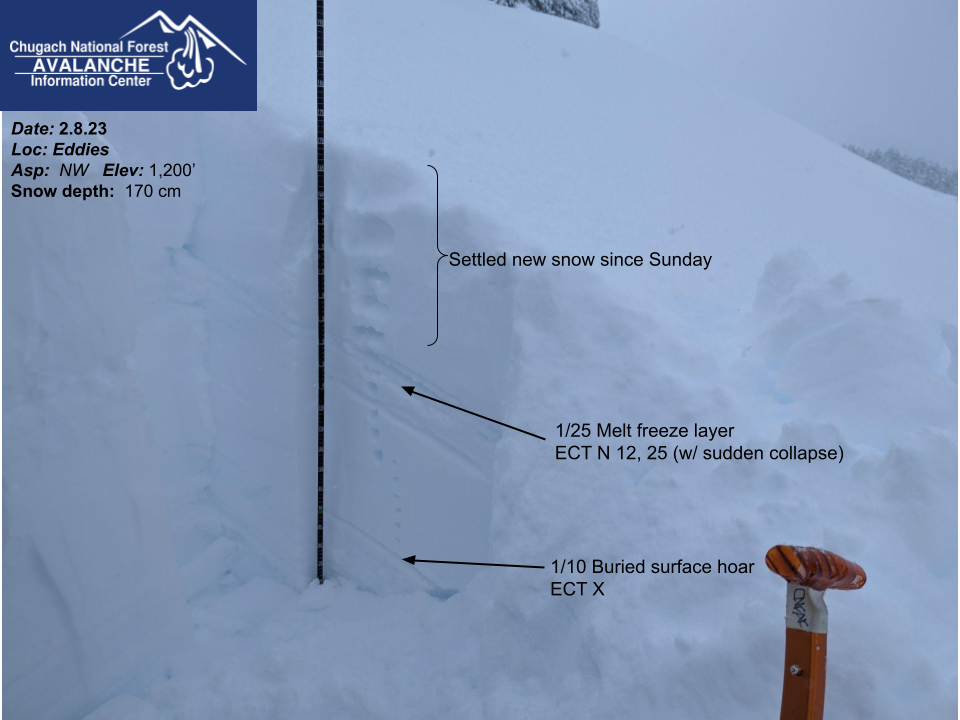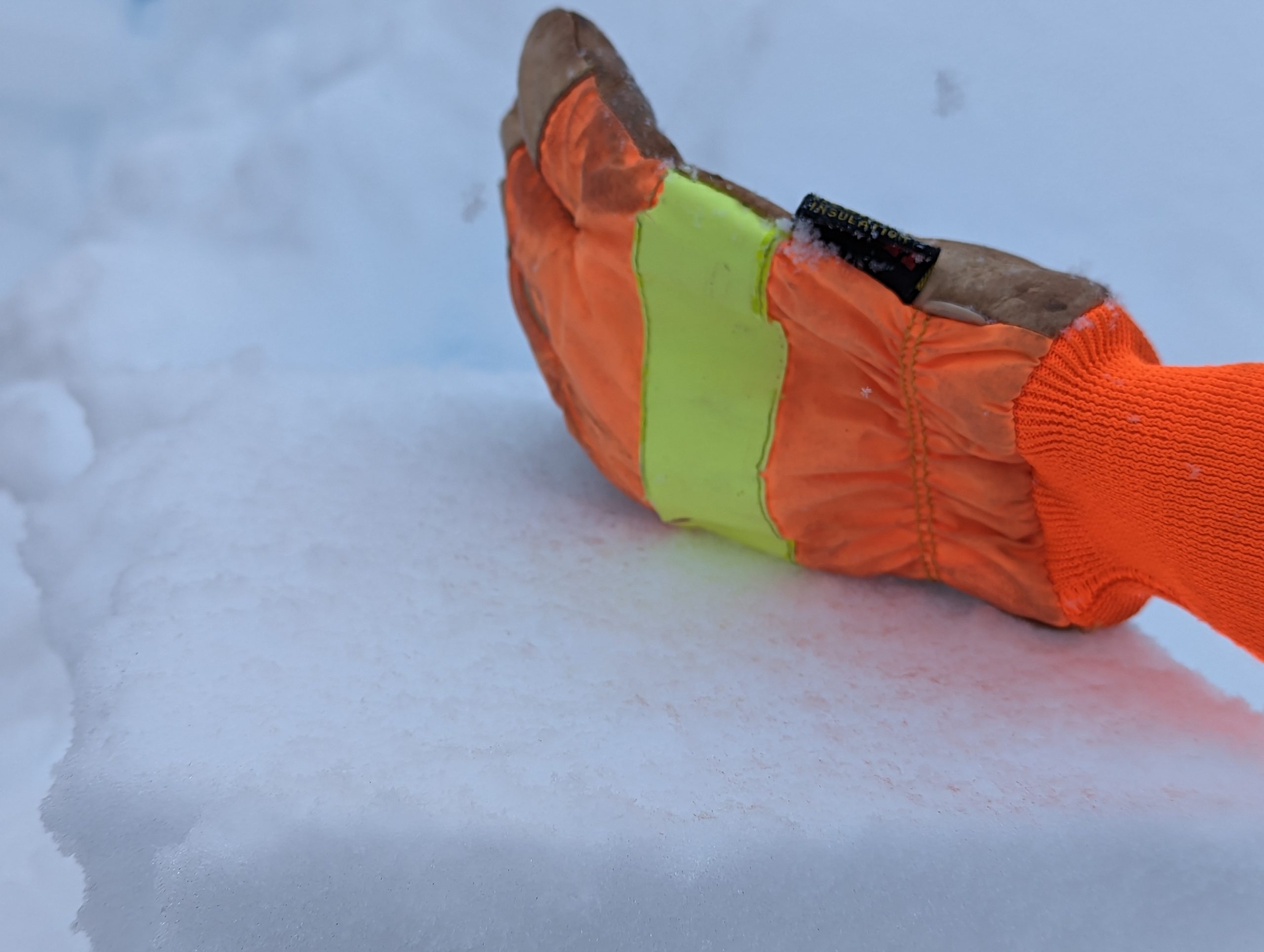Turnagain Pass
|
|
The avalanche danger is CONSIDERABLE above 1000′ today. Continued snowfall and moderate winds will make natural avalanches 1-3′ deep possible and human triggered avalanches likely. Areas with recent wind loading are most likely to harbor touchy avalanche conditions. In addition, a crust layer buried about 1-2′ deep at elevations below 2000′ could cause avalanches in sheltered areas. We recommend identifying terrain features with recent wind loading and paying close attention for red flags to avoid avalanches today. Below 1000′ the avalanche danger is MODERATE.
SUMMIT LAKE: Strong winds over the past 24 hours have impacted this area and avalanche danger is elevated. This area has a very weak existing snowpack and large avalanches on deeply buried weak layers are possible.
SEWARD/LOST LAKE/SNUG HARBOR: The Seward area is expected to be favored by snowfall today which will lead to increased avalanche danger. Keep an eye out for red flags and signs of recent wind loading to identify avalanche prone slopes.
Join us on Valentine’s Day (Feb 14th) for Snowball! Dance to lively music by the Jangle Bees, bid on the silent auction, and enjoy 49th State Brewing libations and decadent desserts. Bring your sweetie or your best backcountry partners—or find new ones on the dance floor. All proceeds from this event benefit the Friends of the Chugach Avalanche Center and the Alaska Avalanche School, so you can let loose knowing it’s for a great cause! Tickets are limited, so get yours soon. Click here for tickets and more information.




